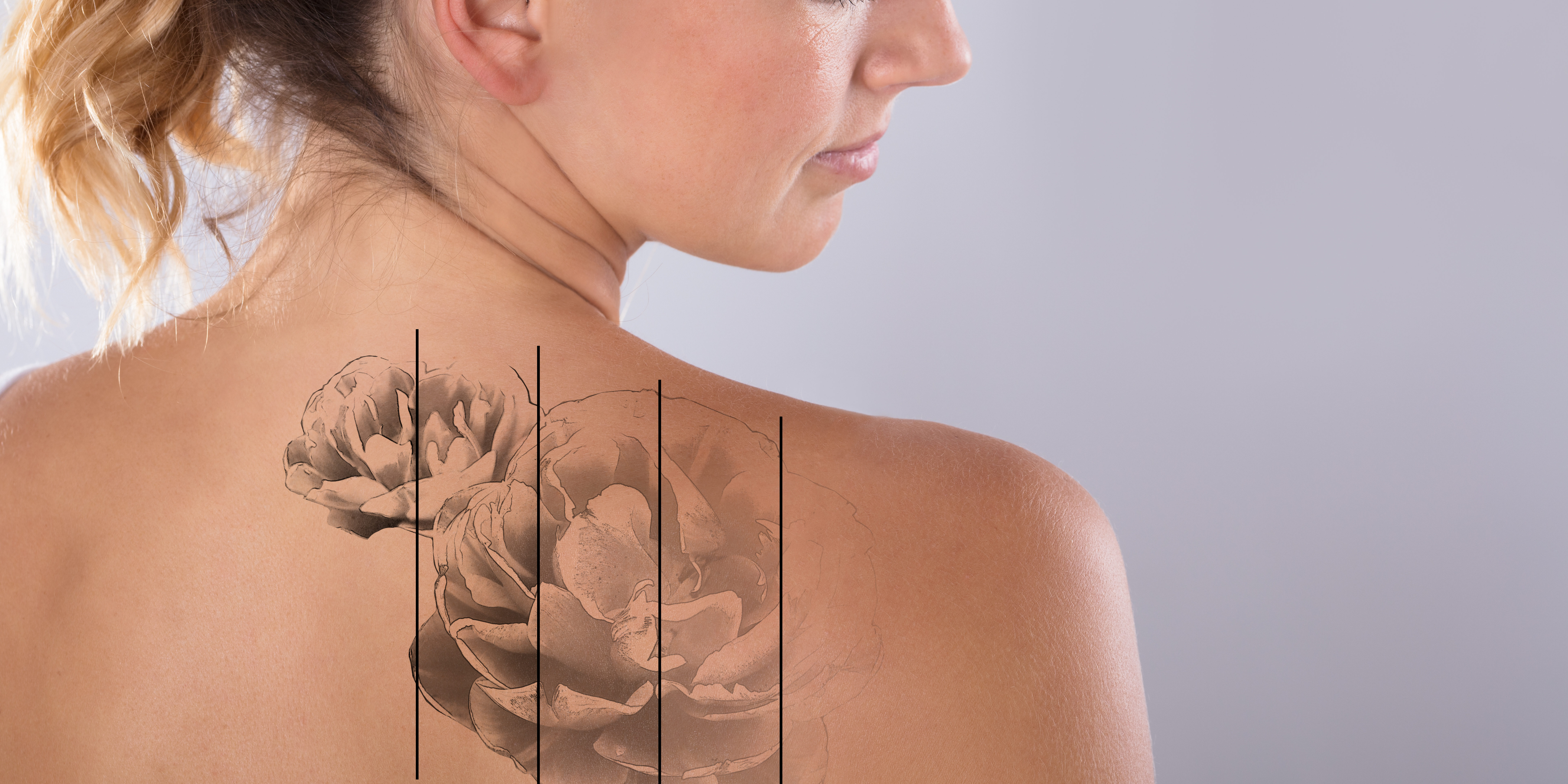Have you ever regretted a tattoo that no longer represents who you are? Laser tattoo removal offers a unique solution for fading or eliminating unwanted tattoos. You can finally say goodbye to a design that no longer aligns with your style or story. By breaking down ink particles beneath the skin’s surface using advanced lasers, this non-invasive treatment ensures precision and safety without compromising the surrounding skin. If you’ve been considering tattoo removal but weren’t sure where to start, now is the time to explore this highly effective procedure.
The Basics of Laser Tattoo Removal
Laser tattoo removal utilizes high-powered lasers to deliver short bursts of energy directly to the tattooed area. These pulses of light are absorbed by the unwanted ink, breaking it into smaller particles. Once fragmented, the body’s natural processes, primarily through the lymphatic system, work to eliminate these particles over time.
The process is highly precise, targeting only the ink pigments while preserving the integrity of the skin. Different wavelengths of light are required to remove various tattoo colors, making the procedure adaptable to all types of tattoos, regardless of their complexity or vibrancy.
The Science Behind the Procedure
The success rate of laser tattoo removal relies heavily on the interaction between the laser’s energy and the ink particles. Tattoos are composed of ink pigments embedded within the dermis, which is the deeper layer of the skin. When exposed to laser light, the ink particles absorb the energy and shatter into smaller fragments. This process is known as the photo-acoustic effect, which ensures the surrounding skin remains unharmed.
Each session reduces the tattoo’s visibility as more ink particles are broken down and subsequently cleared by the body. Factors such as ink type, tattoo depth, and skin tone influence the number of sessions required for complete removal.
Advanced Laser Technology: The ClearLift Laser
The ClearLift Q-switched ND: YAG ClearLift laser represents one of the most cutting-edge advancements for tattoo removal. It is particularly effective at treating multicolored tattoos, including vibrant shades like red and orange. The device operates at two distinct wavelengths, enabling it to target both dark and bright pigments.
Unlike older methods, the ClearLift laser minimizes the potential for scarring or lightening of the skin (hypopigmentation). Its short, precise pulses deliver energy in a way that ensures minimal damage to the skin. This feature has made it a go-to option for people looking for a safe and reliable tattoo removal solution.
Treatment Areas
Laser tattoo removal is versatile and can be applied to virtually any part of the body. Popular treatment areas include:
- Arms: Removes tattoos from the upper arms, forearms, and delicate areas like elbows.
- Legs: Effectively treats tattoos on the thighs, calves, knees, and ankles.
- Back and Chest: Addresses large tattoos spanning the upper back, lower back, or chest.
- Hands and Fingers: Targets intricate designs or lettering on hands, knuckles, and fingers.
- Neck and Face: Safely removes tattoos in sensitive areas like the neck, jawline, and temples.
- Feet and Toes: Treats detailed tattoos on the tops of feet and toes.
- Abdomen and Waist: Fades tattoos on the stomach or waistline without compromising skin quality.
- Shoulders and Collarbone: Smoothly removes tattoos from the collarbone or clavicle area.
- Buttocks and Hips: Target tattoos in the hip and upper thigh areas.
- Ears and Scalp: Safely eliminates tattoos near the hairline, behind the ears, or on the scalp.
Benefits of Laser Tattoo Removal
Laser tattoo removal offers numerous advantages, making it a preferred choice for many individuals. Key benefits include:
- Compatibility with tattoos of various sizes and colors.
- Precise targeting of ink particles without damaging the surrounding skin.
- Effectiveness on both new and older tattoos.
- Minimal discomfort during treatment sessions.
- A non-invasive alternative to surgical removal techniques.
- Customizable treatment plans tailored to individual needs.
- Quick recovery times and minimal downtime.
- Safety for multiple skin types and tones.
- Improved skin rejuvenation over time as the tattoo fades.
The Treatment Process
- Initial Consultation: Your tattoo removal process starts with an initial consultation to evaluate the tattoo, skin type, and desired outcomes. A trained specialist assesses the tattoo’s depth, color, and size to develop a personalized treatment plan.
- Treatment Sessions: During each session, the laser is applied to the tattooed area, delivering precise pulses of energy. Session length depends on on the tattoo’s size and complexity, but most sessions last only a few minutes.
- Healing and Recovery: Post-treatment, the body’s healing process gradually removes the fragmented ink particles. Individuals might notice short-term effects such as redness, swelling, or slight discomfort, which typically resolves within a few days.
- Follow-Up Sessions: Complete tattoo removal usually requires multiple sessions spaced 6 to 8 weeks apart. On average, 7 to 10 sessions are necessary to achieve optimal results. The waiting period allows the skin to heal and the body to clear the ink particles effectively.
Pre- and Post-Care Instructions
Adhering to pre- and post-care instructions is critical for maximizing the effectiveness of laser tattoo removal and ensuring a smooth recovery.
Pre-Care Guidelines:
- Avoid sun exposure on the tattooed area for at least two weeks before treatment.
- Do not use tanning products or undergo tanning treatments.
- Keep the tattooed skin clean and moisturized.
- Refrain from taking blood-thinning medications unless approved by a doctor.
- Shave the treatment area, ensuring no irritation occurs.
Post-Care Guidelines:
- Keep the treated area clean and dry for the first 24 hours.
- Avoid direct sun exposure and apply SPF 30+ sunscreen daily.
- Do not pick at scabs or blisters that may form during healing.
- Use a gentle, fragrance-free moisturizer as directed.
- Follow the personalized aftercare plan provided by the specialist.
Factors Influencing Treatment Outcomes
Several factors can affect the success and duration of laser tattoo removal, including:
- Ink Composition: Some pigments, especially light colors, are more challenging to remove.
- Tattoo Age: Older tattoos often fade more easily than newer ones.
- Skin Tone: Lighter skin tones typically absorb laser energy more effectively.
- Tattoo Depth: Ink embedded deeper in the dermis may require additional sessions.
- Immune Response: The body’s ability to clear fragmented ink particles varies from person to person.
Common Myths About Laser Tattoo Removal
- Laser Removal Leaves Scars: Modern lasers, like the ClearLift, are designed to minimize skin damage, reducing the likelihood of scarring.
- Only Dark Tattoos Can Be Removed: Advanced laser technology can target a wide range of colors, including bright and vibrant shades.
- The Procedure Is Extremely Painful: While some discomfort may occur, most patients compare the sensation to a rubber band snapping against the skin.
- Tattoos Can Be Removed in One Session: Complete removal typically requires multiple sessions to ensure thorough fading and healing.
Takeaway
Laser tattoo removal in Roosevelt, UT, is a highly effective, non-invasive method for eliminating unwanted ink. By leveraging cutting-edge laser technology, such as the ClearLift Q-switched ND: YAG laser, the procedure offers precise targeting of ink particles with minimal risk to the skin. Whether addressing small, intricate designs or large, multicolored tattoos, pigment removal provides a safe and reliable solution for achieving clear skin.
For those seeking professional results, the Refresh Aesthetics in Utah team offers personalized care and advanced treatment services tailored to your specific needs. Schedule Your Tattoo Removal Consultation Now to take the first step toward achieving your goals with confidence.




